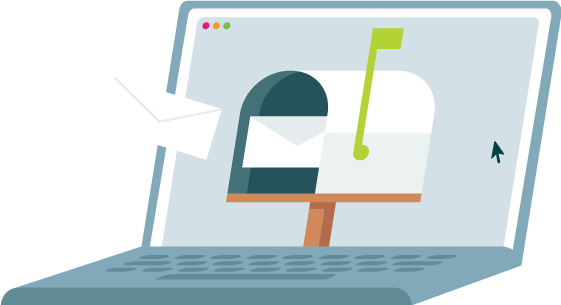Healthcare leaders, trustees, and executives significantly impact their organization’s finances and processes and rely on certain internal financial reports to make decisions. This blog provides a brief overview of healthcare accounting and the power of automation to improve processes for healthcare-focused organizations.
Key takeaways
- Healthcare accounting is all about managing revenue, expenses, and compliance while keeping the organization financially stable.
- Providers, administrators, insurers, and regulators all play a role in shaping how healthcare organizations handle their finances.
- Automating accounts payable and financial workflows helps reduce errors, saves time, and improves overall efficiency.
- The future of healthcare accounting is moving toward real-time insights and cloud-based systems, which will make financial management smoother and more reliable.
What is healthcare accounting?
Healthcare accounting is the practice of processing and recording financial transactions. Everyone does this on a small scale in their personal lives–we have to know how much money we have coming in and when to expect its arrival to make sure we can pay the mortgage on time.
People often have multiple bills and due dates to keep track of, along with everyday expenses such as food and gas. You may use credit cards to cover an expense due before your next paycheck arrives, and so on. But when it comes to accounting in the business world, keeping track of finances gets a lot more complicated very quickly, which is why accounting is a field of specialization, typically requiring a degree and certification. Accounting typically includes several departments, including accounts receivable and accounts payable, which handle receiving and paying money on behalf of the organization.
With healthcare organizations, money comes in from insurance payments, patient payments, and sometimes grants or other sources. Money goes out to cover wages, supplies, reimbursements and overhead. But it’s rarely the case that the money to cover expenses arrives when the expense is incurred.
Insurance payments may be delayed or require back-and-forth communication, and some patients pay late or can’t afford to pay. All sorts of supplies are needed–some on a regular basis and some infrequently–and from multiple different vendors who all must be paid. Additionally, healthcare accountants must ensure they remain compliant with HIPAA regulations. All of these confounding factors make healthcare accounting a careful balancing act.
What is the role of a healthcare accountant?
Healthcare accountants maintain healthcare organizations’ financial records. They may work for hospitals, health insurance companies, or private physician practices and are required to comply with federal, state, and local laws and regulations regarding accounting and healthcare management.
Day to day tasks of healthcare accountants include:
- Measuring revenues and expenses
- Allocating revenue
- Calculating depreciation
- Generating accounting reports
- Tracking reimbursement
- Developing the budget
- Monitoring financial reporting
One of the most important jobs of healthcare accountants is handling the balance sheet. The balance sheet lists estimates of all assets and debts and the difference between total assets and total debts, providing a current estimate of the company’s net worth.
The accounts receivable and accounts payable departments are essential to maintaining the balance sheet. AR ensures that payments are received from customers, while AP pays bills to vendors. Reducing errors and increasing efficiencies in both departments is essential. However, since the pandemic, this has become increasingly important for AP teams. Nineteen percent of those surveyed in the 9th Annual State of AP Report noted their work environment has become remote, and 42% are working a hybrid model. Since AP has traditionally focused on manual processes and paper checks, automating these processes is essential for companies looking to reduce errors and increase efficiencies in their accounting departments.
Why is healthcare accounting important?
The primary goal of the healthcare industry is to provide patients with proper care and treatment. However, this treatment also needs to be cost-effective. The accounting department ensures everything on the financial end runs smoothly. Supplies must be sourced that are of sufficient quality without breaking the bank. As mentioned previously, the inflow and outflow of money in the healthcare industry comes with complications related to health insurance claims and late or non-payments.
Eighty-eight percent of healthcare finance professionals say their organization needs automation to improve efficiency and reduce costs, highlighting just how critical accounting performance is in today’s environment.
Any healthcare organization that doesn’t manage its finances effectively will not survive long. When accounting processes fail to be effective or keep up with processing efficiencies and technology use times, this leads to significant problems. Moreover, handling accounting data and generating reports is vital for proper decision-making.
Examples of stakeholders involved in healthcare accounting
In healthcare accounting, key stakeholders vary depending on the structure of the organization. These stakeholders often operate in business-centric models where the management handles the operational side, and clinicians focus on providing care. Below are examples of the key stakeholders involved in healthcare accounting, including:
- DSOs
- Veterinary consolidators
- Ambulatory surgery centers
- Biotech and pharmaceutical companies
- Medical device sales and MedTech companies
1. Dental service organizations (DSOs)
DSOs streamline the business side of dental practices by taking equity stakes in multiple practices and managing back-office operations as a shared service at scale. This frees up clinicians to focus exclusively on patient care while the DSO handles billing, revenue cycle management, and financial reporting. For these multi-location organizations, effective healthcare accounting is essential for maintaining visibility into cash flow, analyzing operational costs, and ensuring profitability across their network of practices.
2. Veterinary consolidators
Similar to DSOs in structure, veterinary consolidators bring multiple clinics under unified management to boost operational efficiency. They take on accounting, payroll, and vendor management so veterinarians can concentrate on animal care. Healthcare accountants in these organizations must navigate multiple revenue streams, track expenses across locations, and stay compliant with veterinary-specific financial regulations—all while providing the financial insights needed for strategic growth.
3. Ambulatory surgery centers (ASCs)
ASCs specialize in outpatient procedures like knee replacements and other non-emergency surgeries. Behind the scenes, their business operations involve coordinating complex billing processes, insurance claims, and comprehensive financial reporting. With multiple insurers and payer systems in play, healthcare accounting becomes particularly critical for ASCs to ensure accurate revenue capture and maintain financial stability while medical professionals focus on patient care.
4. Biotech and pharmaceutical companies
Biotech and pharmaceutical organizations share many accounting needs with other healthcare entities while managing substantial R&D investments, product development cycles, and clinical trials. These companies typically handle significant capital injections and startup costs, maintain extensive vendor relationships, and require robust financial oversight to track costs effectively. Their accounting processes must ensure regulatory compliance while providing the financial clarity needed to navigate their complex ecosystems.
5. Medical device sales and MedTech companies
Medical device and MedTech organizations face distinct accounting challenges related to high-value equipment sales and innovative technology. These companies need precise financial management for proper revenue recognition, inventory tracking, and detailed cost analysis. Healthcare accountants in this space must stay on top of regulatory requirements while providing the financial reporting that supports strategic decision-making in a rapidly evolving market.
6. Assisted living facilities
Assisted living facilities manage a complex blend of healthcare services and residential operations, creating unique accounting challenges. These organizations must track multiple revenue streams, including resident payments, insurance reimbursements, and sometimes government funding, while managing significant operational expenses across food service, facility maintenance, and specialized care staff. Healthcare accountants in assisted living facilities need to maintain detailed resident billing records, monitor occupancy rates that directly impact revenue, and ensure compliance with both healthcare and housing regulations. With their hybrid business model, these facilities require accounting systems that can effectively balance healthcare service tracking with property management financials to maintain both quality care and financial sustainability.
Challenges in healthcare accounting
There are several challenges that healthcare and medical companies can face. These include the following:
- The accountant shortage
- Retaining and recruiting financial talent
- Visibility into the process
- Fraud
- Regulatory compliance and HIPAA
The accountant shortage
CFOs and controllers across the US are reporting an accountant shortage. There are 340,000 unfilled positions in the United States, and these numbers continue to climb. The number of CPA candidates has decreased by almost 50% since 2016, and companies are feeling the impact. Additionally, 83% of senior leaders are experiencing a shortage of accounting talent–a 13% increase from 2022.
Retaining and recruiting financial talent
CFOs and controllers are concerned about recruiting and retaining finance talent in a highly competitive market. According to research, 20% of professionals cited staff turnover as their largest concern for accounts payable, while 14% reported recruitment as their biggest challenge. Companies need to find ways to engage finance talent.
Visibility into the process
Manual systems make it difficult to achieve real-time spending insights, leading to inaccurate cash forecasts. Additionally, on-time payments are a critical aspect of vendor relationships. Without visibility into the process, accounting teams risk late payments, negatively impacting supplier relationships.
Fraud
Fraud is a big concern for all organizations. Research shows that 96% of companies noted that phishing was the most common type of fraud affecting their accounts payable staff. Additionally, 42% of companies indicated that business email compromise (BEC) attempts increased over the last year. As a result, healthcare organizations must ensure they have strong internal controls to protect their companies from bad actors.
Regulatory requirements and HIPAA
Another key challenge is ensuring compliance with regulatory requirements, especially HIPAA. Healthcare organizations must ensure they are handling both financial and patient data securely and compliantly, adding a layer of complexity to the accounting process.
While these challenges can be tough, they’re manageable. Healthcare organizations can stay ahead by adopting the right technology, streamlining processes, and following best practices. Whether automating accounts payable, boosting fraud prevention, or staying on top of regulatory compliance, the key to success is being proactive and using the right solutions to keep things running smoothly.
Essential accounting reports
Outlined below are some essential accounting reports that inform critical decision-making in the healthcare field. These reports must be timely and accurate so they can be acted upon confidently. Together, they provide a detailed picture of an organization’s financial health. Key accounting reports include:
- P&L statements
- Balance sheet
- Statement of cash flow
P&Ls
Profit and loss statements, or P&Ls, are financial reports that summarize revenues, costs, and expenses over a specific period of time. They are often issued quarterly and annually and prepared using cash or accrual accounting methods. Comparing P&L statements from different accounting periods is useful to observe changes over time, which often offers more insight than a one-time snapshot.
P&L statements are mandatory for all publicly traded companies and must be filed with the SEC. They must also comply with the rules outlined in the generally accepted accounting principles (GAAP).
Balance sheet
A balance sheet reports a company’s assets and liabilities on the specific date it is published. In contrast to P&L statements, the balance sheet does not show trends over time, and comparing the current balance sheet with previous ones generally does not make sense.
The information provided in the balance sheet is used to calculate important metrics and financial ratios, which are used for analysis. These include:
- Current ratio: the quotient of current assets over current liabilities
- Quick ratio: The difference between current assets and inventories divided by current liabilities
- Working capital: The difference between current assets and current liabilities
- Debt-to-equity: The total liabilities divided by equity
Statement of cash flows
The cash flow statement summarizes all forms of cash coming into a company. This includes cash from operations, investment, and financing, which are typically broken down into three different sections within a cash flow report.
This statement provides an overview of all transactions flowing through an organization that contributes to its solvency. It helps with the monitoring of operations, aids investors by providing important financial detail, helps a company determine its current financing needs, and is useful in long-term planning.
Automating healthcare accounting processes
Automation continues to reshape healthcare accounting, addressing long-standing inefficiencies and improving financial workflows. According to MineralTree’s latest State of AP Report, accounts payable (AP) remains the number one automation priority for finance professionals, yet only 19% of organizations have fully automated their AP process. This gap presents a significant opportunity for healthcare organizations to streamline operations, reduce costs, and enhance accuracy.
With the growing complexity of healthcare finance, including insurance reimbursements, regulatory compliance, and vendor payments, manual processes are no longer sustainable. The report found that 51% of finance professionals cite reducing inefficiencies and costs as their primary reason for investing in automation, while others seek better data insights, improved cash flow management, and enhanced security measures to combat fraud.
Examples of automation in healthcare accounting
Here are two real-world examples of how automation is making a significant impact in healthcare accounting:
1. cCARE saves 80% of time spent on manual processes
California Cancer Associates for Research and Excellence (cCARE) is the biggest oncology and hematology practice in the state of California. Their AP team used to rely on manual processes to pay their bills. However, this process was extremely tedious and time-consuming, with over 1,000 invoices a month needing to be processed. Their team would make two check runs a week, with each payment requiring approval. By leveraging MineralTree’s AP automation technology, cCare was able to improve its process and integrate payments automatically with QuickBooks. Additionally, MineralTree allowed cCare to save 80% of the time spent on manual processes and focus time on other high-value initiatives that were often difficult to juggle due to time constraints.
2. Cascade Senior Living Services drives down costs
Cascade Senior Living Services helps senior living services tackle the back-end office work so that these centers can focus on their residents. However, this organization faced challenges due to remote work and manual processes, resulting in visibility, outstanding invoices, and a few items being paid for twice. Cascade chose MineralTree as an end-to-end AP automation solution. Through MineralTree, they were able to drive down costs, cut down on inefficiencies, and create a more centralized process.
Best practices for healthcare accounting departments
To improve the efficiency of healthcare accounting departments, consider implementing these best practices:
- One of the best ways to ensure smooth operations is by processing invoices promptly. This reduces the risk of late fees, ensures timely vendor payments, and helps avoid cash flow disruptions. Regular follow-ups on overdue invoices will also prevent long-term financial issues.
- Budgeting and forecasting are also important for healthcare organizations. Predicting revenue and expenses for the coming year helps identify potential cash flow issues and allows for better decision-making.
- In addition, maintaining financial transparency is critical. Clear, accurate financial reports help healthcare organizations make informed decisions and build trust with stakeholders. Transparent reporting also ensures that the organization remains compliant with regulations and that financial data is easily accessible when needed.
The future of healthcare accounting
Healthcare accounting isn’t staying the same, and neither should you. Several trends are shaping the future of accounting in the healthcare sector, which are outlined below.
Healthcare automation
One major trend is automation. You’re already aware of how automation can streamline accounts payable (AP), but it’s set to become a broader trend across healthcare accounting. From billing to compliance checks, automation can reduce errors, save time, and improve overall efficiency.
Real-time insights
Another trend on the horizon is the increasing importance of real-time financial data. Healthcare organizations will soon rely more on up-to-date data for decision-making. Advancements in technology are making it easier to access real-time invoice data and integrate it directly into reporting, enabling faster and more accurate financial decisions. With MineralTree, healthcare organizations no longer have to wait for invoice data to be posted to the ERP system for cash forecasting, leading to more accurate financial planning and better control over cash flow.
Cloud-based financial management
Lastly, as more healthcare organizations move to cloud-based systems, the ability to access and manage financial data remotely will be a game-changer. Cloud-based financial management solutions like MineralTree allow for seamless collaboration across teams, real-time updates, and easy access to critical financial information from anywhere. This shift towards cloud solutions will enhance operational efficiency and scalability while reducing the IT burden of maintaining an on-premise infrastructure.
Final thoughts
Healthcare organizations are under scrutiny as the industry faces increasing pressure to both manage costs and deliver high-level patient care, all while the AP department often deals with manual paper processes. MineralTree’s AP automation solution can help healthcare organizations reduce costs, boost efficiency, and redirect efforts to more important concerns.
MineralTree has helped healthcare organizations not only drive out inefficiencies in the decentralized invoice collection and approval process but also increase employee retention and enhance security measures to prevent breaches by leveraging HIPAA-compliant technology. By providing easy access to invoice status, reports, and audit trails in one central location, MineralTree makes it easy to generate critical financial reports that can be used to more accurately control, analyze, and predict financial business outcomes.
Healthcare accounting FAQs
Tl;dr? If you’re short on time, the frequently asked questions below provide a quick snapshot of what you need to know about healthcare accounting.
How does automation improve financial reporting in healthcare accounting?
Automation enhances accuracy and efficiency in financial reporting by reducing manual data entry errors, ensuring compliance, and providing real-time insights into revenue and expenses.
What are the biggest financial challenges healthcare organizations face?
Healthcare organizations struggle with delayed insurance reimbursements, patient non-payment (bad debt), rising operational costs, and ensuring compliance with ever-changing financial regulations.
What role does HIPAA play in healthcare accounting?
HIPAA regulations ensure that financial transactions involving patient data are secure, requiring healthcare organizations to maintain strict data privacy and compliance standards in their accounting practices.
What is GAAP in healthcare?
GAAP (Generally Accepted Accounting Principles) is a set of rules used to keep financial reporting consistent and transparent. For healthcare organizations, following GAAP ensures that financial statements are accurate and compliant with regulations, providing a clear view of the organization’s financial health.
What method of accounting do healthcare organizations use?
Healthcare organizations usually use the accrual method of accounting, meaning they record revenues and expenses when they’re earned or incurred, not when cash is received. This helps give a more accurate picture of financial health, especially with delayed insurance payments and complex billing.




